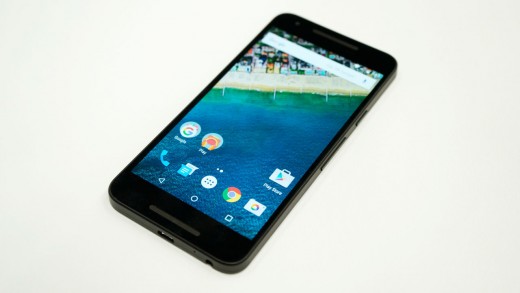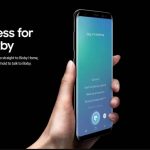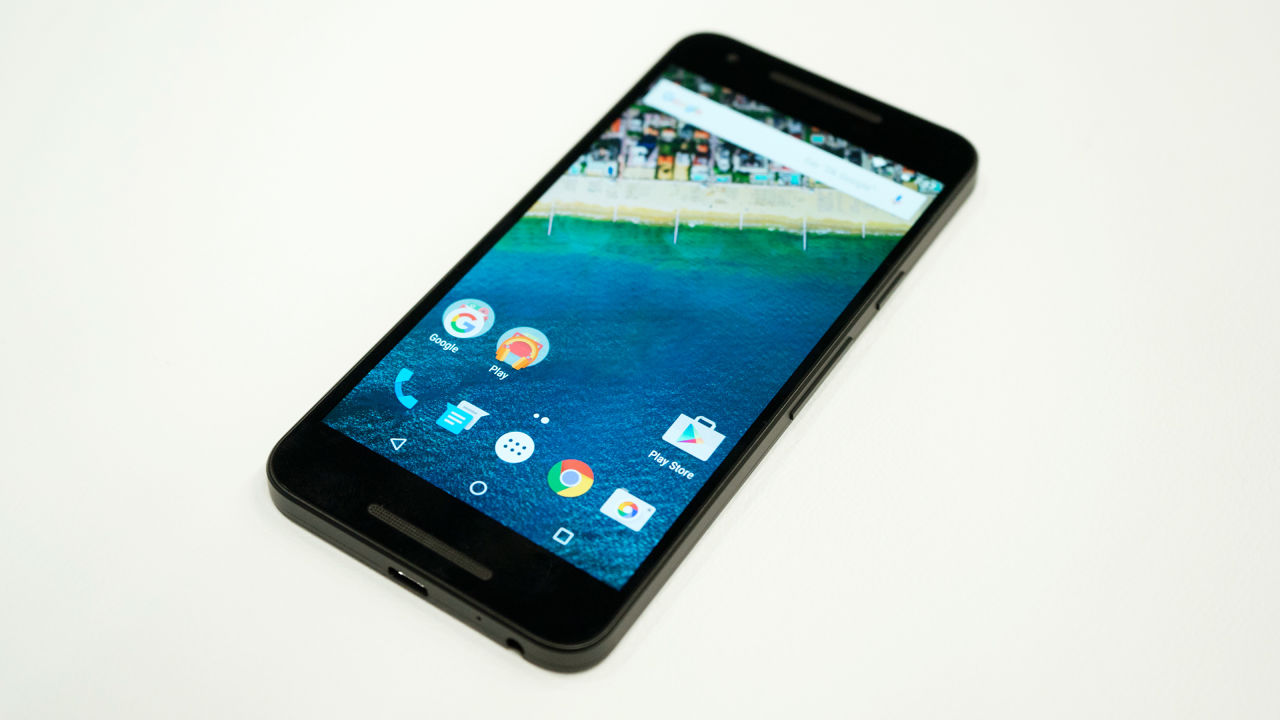Nexus 6P And 5X Review: Five Years Later, Google’s Phones Finally Make Sense
Why do these phones exist? Because they’re a great deal.
As a purveyor of smartphones, Google never had the best timing.
The company’s Nexus phone line is supposed to show off Android at its best, yet it’s never taken off as a commercial enterprise. While the original Nexus One was ahead of its time, sold unlocked and online through Google’s website, its defiance of wireless carriers assured it a quick death. Subsequent attempts to partner with those carriers fizzled, as carrier-branded phones from Samsung, Motorola, and HTC took over the market. In recent years Google seemed to resign Nexus phones to obscurity, labeling them as mere reference devices to inspire app developers and phone makers.
But perhaps the Nexus program’s moment is finally here. In 2015, buying an unlocked phone actually makes sense, and Samsung’s grip on Android is weakening as the market shifts toward cheaper handsets. With the new Nexus 6P and Nexus 5X, unlocked at $499 and $379 respectively, the timing could be just right.
More For Less
Despite being much cheaper than a $650 iPhone 6s or Galaxy S6, the new Nexus phones don’t feel like much of a compromise.
That’s especially true of the $499 Nexus 6P, which sports an aluminum case and is heftier than the $379 Nexus 5X. The extra weight isn’t a bad thing; when you’re tapping on the keyboard or pressing the bottom buttons, the resulting haptic feedback feels just right.
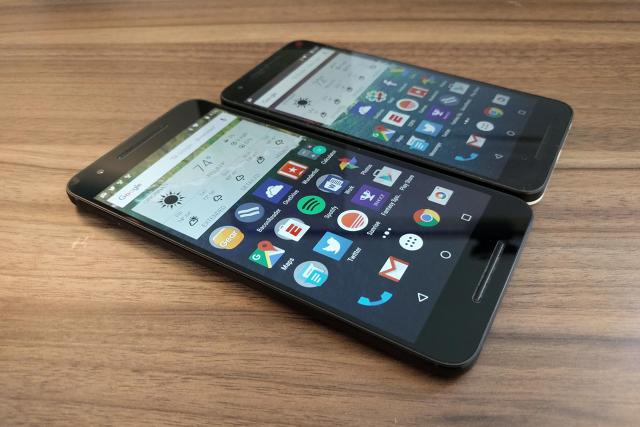
The 6P’s tech specs are nearly top-notch as well. Looking at the 5.7-inch 2560-by-1440 resolution display next to a 2014 iPhone 6 Plus, it doesn’t shine nearly as bright at maximum settings, but the text is crisp and the viewing angles are excellent. The Snapdragon 810 octa-core processor and 3 GB of RAM are just short of the cutting edge, to the point that’s hard to notice any performance hindrances.
It’s fair to say that the Nexus 5X feels about $120 cheaper. The design is thicker, but lighter due to its plastic casing, and the reverberations from its haptic feedback are far less pleasant. (I’m oddly mesmerized, however, by the ice blue color option, available alongside standard black and white versions.)

Meanwhile, the Nexus 5X’s 1080p LCD display gives off a harsher glow compared to the 6P’s AMOLED panel, and washes out a bit at off-angles, though at 5.2 inches it’s still sharp enough not to notice any pixels. The combination of 2 GB of RAM and hexa-core Snapdragon 808 processor makes the 5X a split-second slower at switching between apps. We’re talking near-near-instant vs. near-instant. The 5X’s front-facing speakers aren’t as loud or rich as those of the 6P, either.
Still, the two phones don’t seem drastically different in day-to-day use. They both have fingerprint readers on the rear side, and they have the same 12-megapixel cameras, which take fine pictures but are less reliable than my iPhone 6 Plus at fending off blurry shots. They also both include USB-C connectors, whose reversible cables are much less frustrating than the old MicroUSB standard.
And of course, both phones run the same Android 6.0 Marshmallow software that Google is trying to highlight. Compared to last year’s Android 5.0 upgrade, Marshmallow is largely about refinement. In an effort to boost security and privacy, apps from the Google Play Store will now ask you to access parts of the phone—such as the microphone or your contacts—as needed, rather than burying you in a list of permissions when you first download them. Improvements in battery efficiency allow the phone to sip less power when you haven’t used it for a while, and the battery overview screen now estimates at what time of the day you’ll run out of juice.
That’s not to say Android 6.0 lacks any neat tricks. Holding the home button in any app now triggers “Google Now On Tap,” which looks through on-screen text to find relevant links and app shortcuts. It’s impressive when you remember to use it, but never immediately obvious why you’d do so.
The biggest change is a marriage of hardware and software: With the new fingerprint readers, you can unlock the phone in an instant, skip the password prompts in the Google Play Store, and tap to buy things at retailers that support Android Pay. The speed of fingerprint reading rivals that of the iPhone’s Touch ID, though it took me a solid week to get used to its location on the back of the phone. (I still miss being able to quickly unlock the phone while it’s resting on a table.)
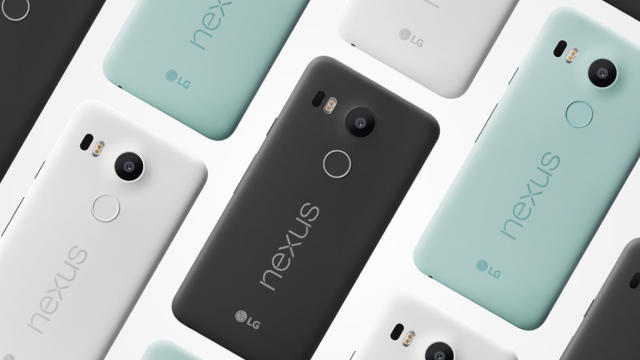
Being a Nexus phone, another major benefit is one that isn’t immediately noticeable: Software updates come straight from Google, rather than another phone maker or a wireless carrier, so Nexus phones tend to be first in line for both major upgrades and minor bug fixes. IPhone users already know what it’s like to get upgrades swiftly, but it’s a huge advantage over most other Android phones.
Is there any reason for iPhone users to consider a Nexus, aside from the price? Admittedly, Android’s distinguishing features are less pronounced than they once were, now that the iPhone supports notifications, extensions, and third-party keyboard support. But I still find Android’s notifications to be far more convenient. Oftentimes, you’re able to glimpse more text and take action with a single tap, and the “clear all” button helps keep you from feeling buried. I also still have a soft spot for Android’s home screen widgets, and never got used to Apple’s take on the concept.
Nexus phones are also better-tuned to run Google services than the iPhone ever will be. An option to search by voice is right on the home screen, and smart reminders from Google Now are just a swipe away. And when you ask the phone for directions by voice, you get Google Maps, which continues to provide superior navigation compared to Apple Maps in my experience.
Not Just For Reference
With the Nexus program now in its fifth year and showing few signs of a market impact, tech observers have been wondering why Google has stuck with it. The Verge’s Vlad Savov posits that Nexus phones are a sort of brand management, raising the bar for hardware makers while also appealing to Android’s most hardcore fans. Over at Techpinions, Jan Dawson runs through a bunch of possible explanations before concluding that Google must find a new purpose for the Nexus program, lest sales continue to putter along.
The truth may lie somewhere between these two points. Sure, Nexus phones are a form of fan service, but the reason they didn’t sell is that you had to be an extremely devoted Android fan to buy one.
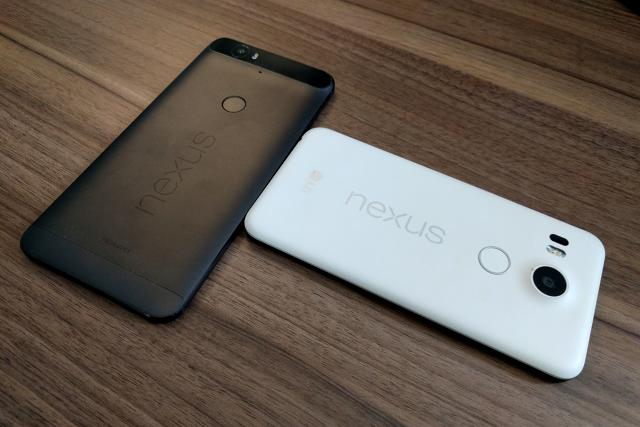
The Nexus 4, for instance, lacked the 4G LTE support that had already become standard on U.S. smartphones. The Nexus 5 rectified that issue, but didn’t support Verizon Wireless, the country’s largest carrier, and at $350 unlocked was still a stretch purchase as $200 subsidized handsets remained the norm. Last year’s Nexus 6 simply had a shocking up-front price of $650, and it was an overly large phone with just a middling camera.
The Nexus 5X and 6P are free of any similar dealbreakers. They’re much cheaper than a typical flagship, and you can take them to pretty much any wireless carrier in the United States and get a discount on wireless service. You still have to stomach the up-front price—the only way to pay in installments is with an invite to Google’s experimental Project Fi wireless service—but it saves money in the long run.
Just as importantly, they’re solid phones, capable of holding their own against today’s flagships. It took five years, a major shift in wireless service, and countless technological advances, but at last it feels like Nexus phones’ time has come.
Related: Google’s New Logo Is Its Biggest Update In 16 Years
Fast Company , Read Full Story
(78)

